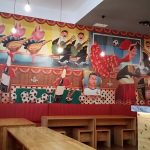Madrid has been on my to-do list for years. From time-to-time I heard people say they love Spain’s capital, but I never really heard specifics, so I was keen to do some exploring.
Coming from Porto, a city with greatly reduced tourists, it took some adjustment to be in a city with lots of tourists. Also staying in a hostel, where people come to the city for only 2 or 3 nights, who desperately want to visit the main tourist attractions, was a bit of a pill to swallow.
So… I decided to just wander, get lost, and drink the best coffee I could find.
OK Madrid Hostel
I was lucky to find such a nice hostel. Hostels have come a long way with improvements since I first started staying in them in 2002.
The staff really made this place:
Madrid Street Views
These are the city wandering, urban-exploring highlights:
Plaza Major
The Plaza Mayor was originally built during Philip III’s reign in 1619 and is a central plaza in the city of Madrid, Spain. It is located only a few Spanish blocks away from another famous plaza, the Puerta del Sol.
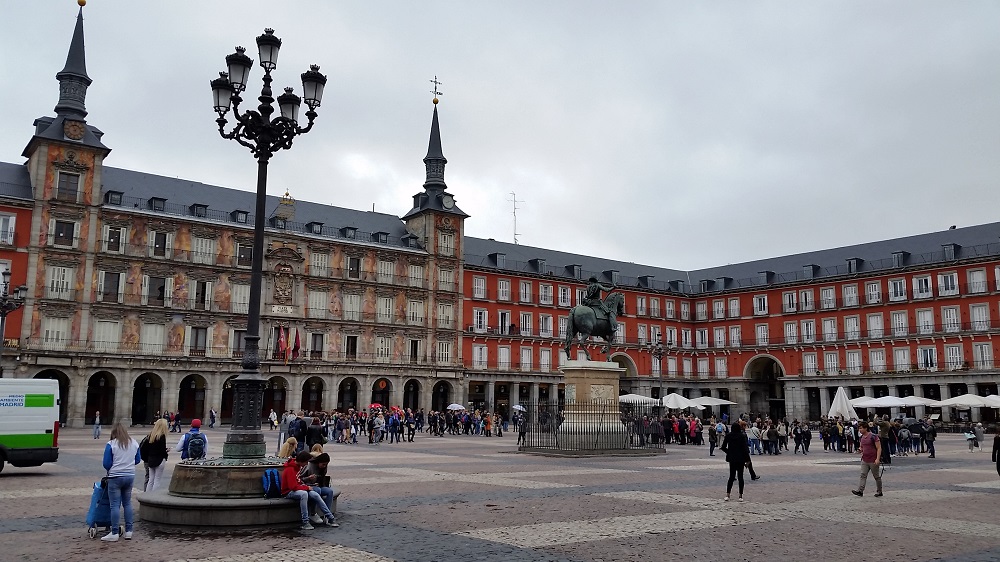
Monasterio de las Descalzas Reales
1500s royal monastery with a museum housing holy relics & works by Titian, Rubens & Bruegel.
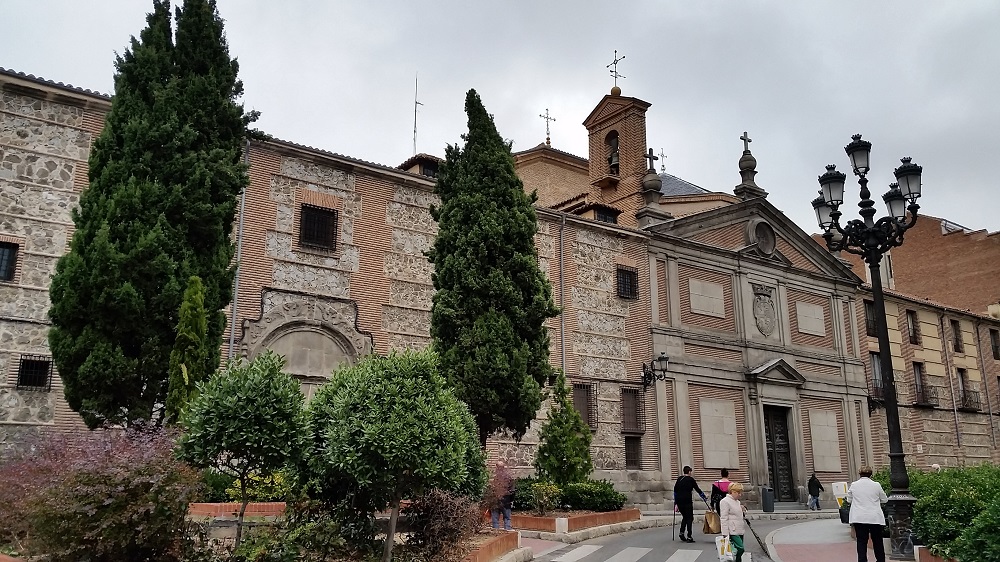
El Cortes Ingles
There is a great view over the city from the top floor of El Cortes Ingles.
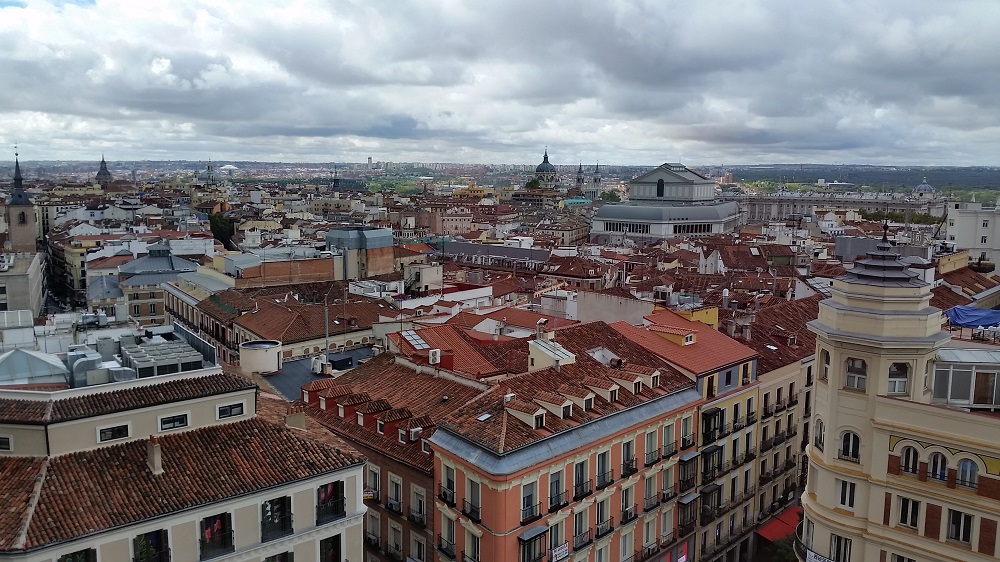
One of the many amazing streets.
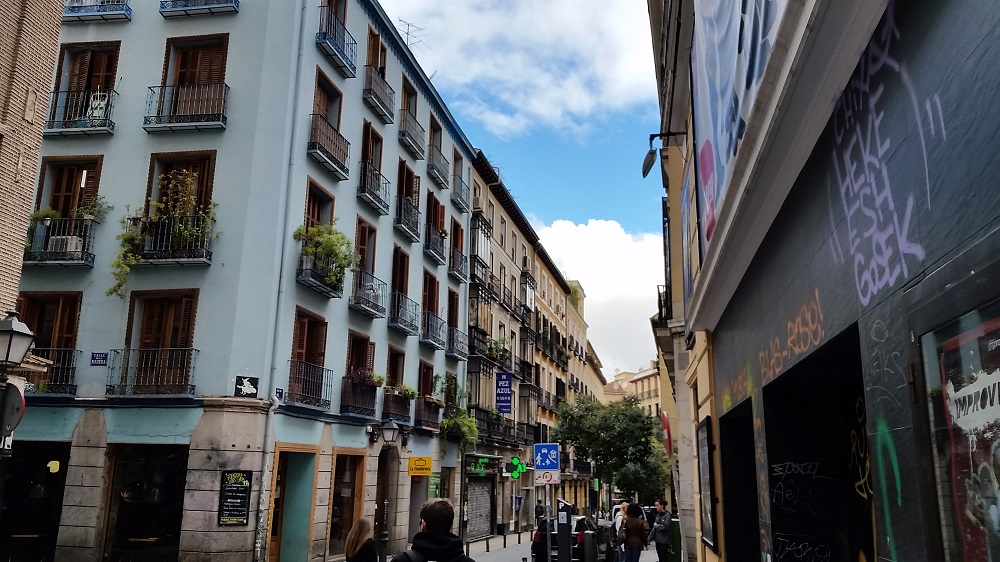
A little plaque on a wall.
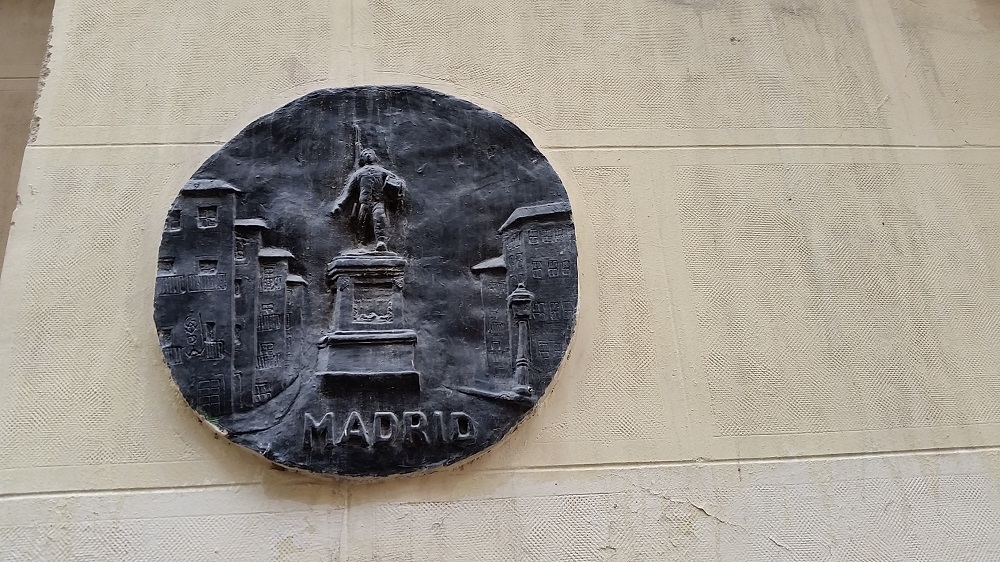
Puerta del Sol
Madrid’s most famous and most central square, which originally was the site of one of the city’s gates. It is is almost semi-circular in shape and underwent major renovation work between 1854 and 1860.
It is also Point Zero (0) for the city.
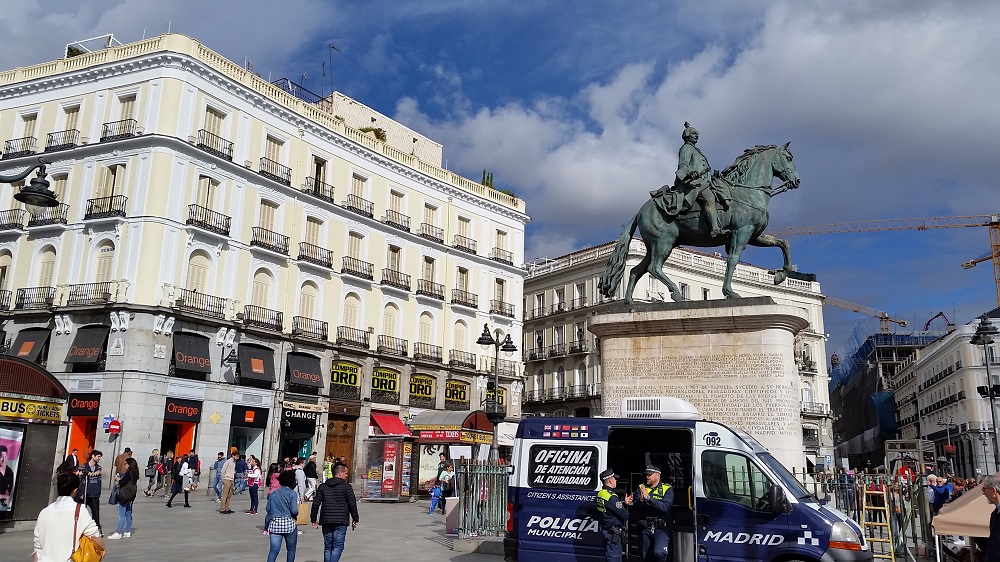
Some colourful street art.
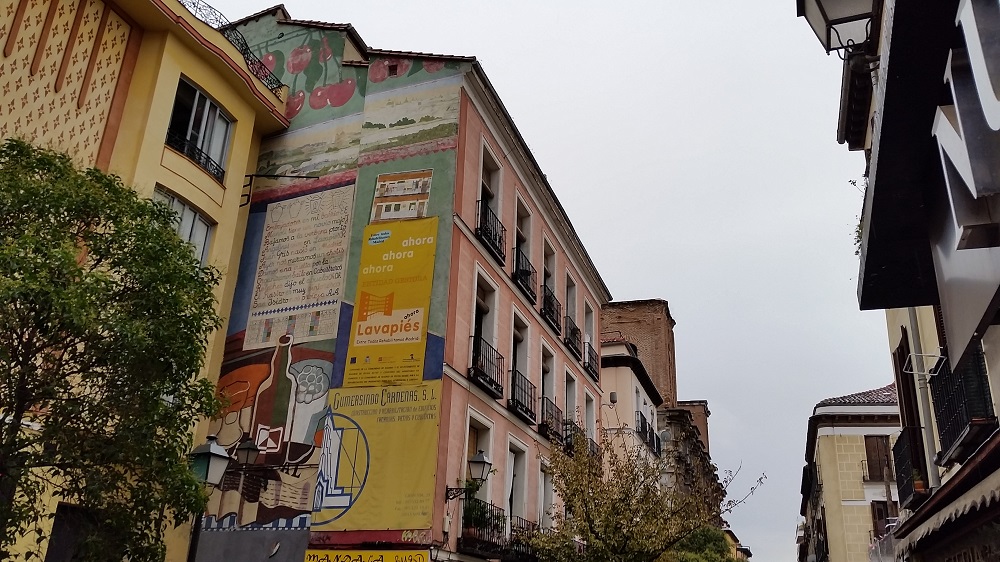
Another great street view.
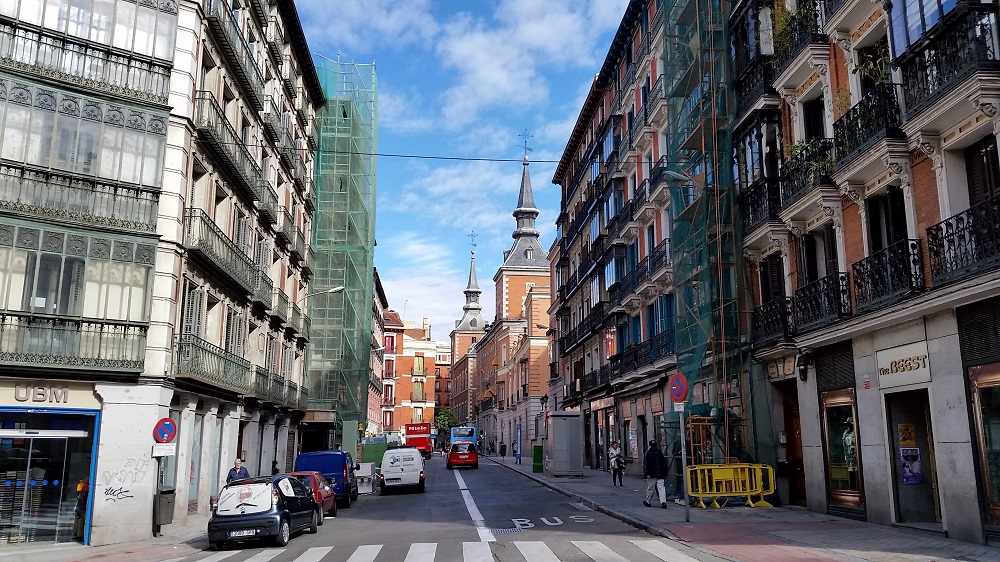
A water feature on Calle del Sacramento.
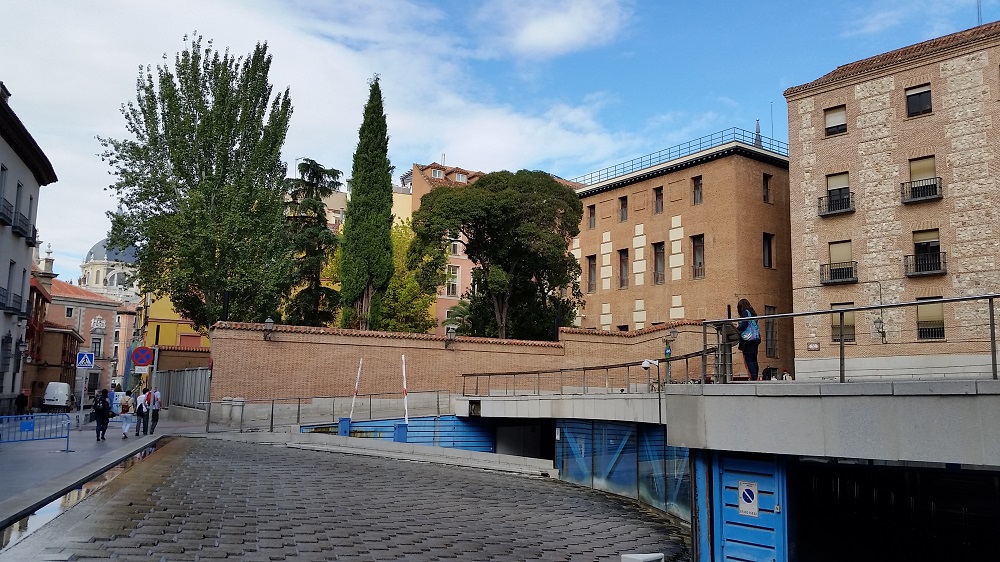
Catedral de la Almudena
The site on which Almudena Cathedral now stands was originally occupied by Madrid’s first mosque, then by a church dedicated to one of Madrid’s patron saints, Santa María de la Almudena.
When the capital of Spain was transferred from Toledo to Madrid in 1561, King Felipe II he wanted a cathedral for his new capital.
Plans were discussed as early as the 16th century to build a cathedral in Madrid dedicated to the Virgin of Almudena, but construction did not begin until 1879. It was finally completed in 1993.
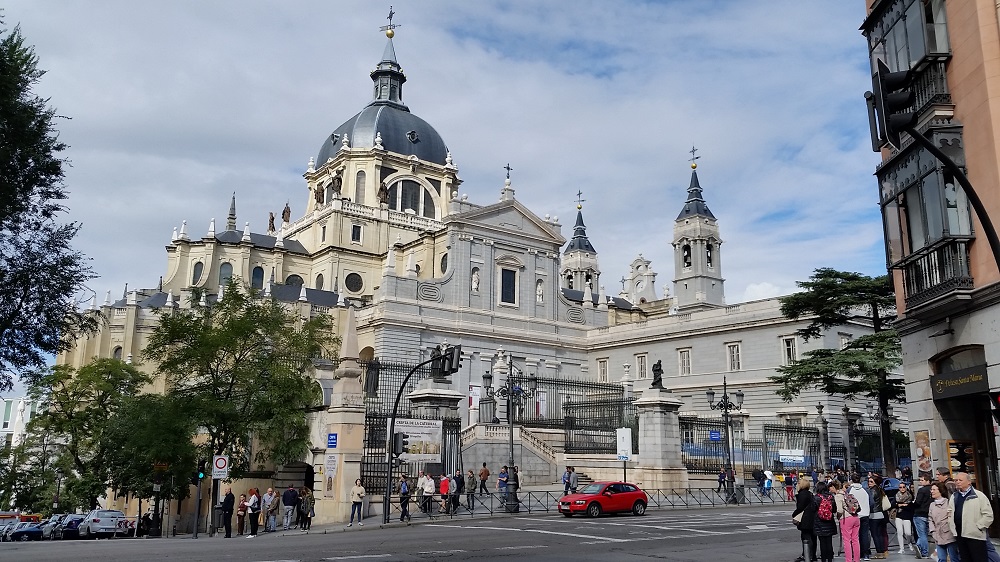
Puerta de San Vicente
King Charles III ordered Sabatini to build the San Vicente gate in 1775 at almost the same time as the Puerta de Alcalá. However, the original work was lost because it was dismantled in 1892 to make way for traffic, and some of the ashlars in the monument were used for the construction of decorative lampposts in the Glorieta de Cibeles.
In 1692, the city council passed a motion for a reproduction of the monument valued at a million pesetas (€6,000) to be constructed. However, the first stone of the new Puerta de San Vicente was not laid until 1994.
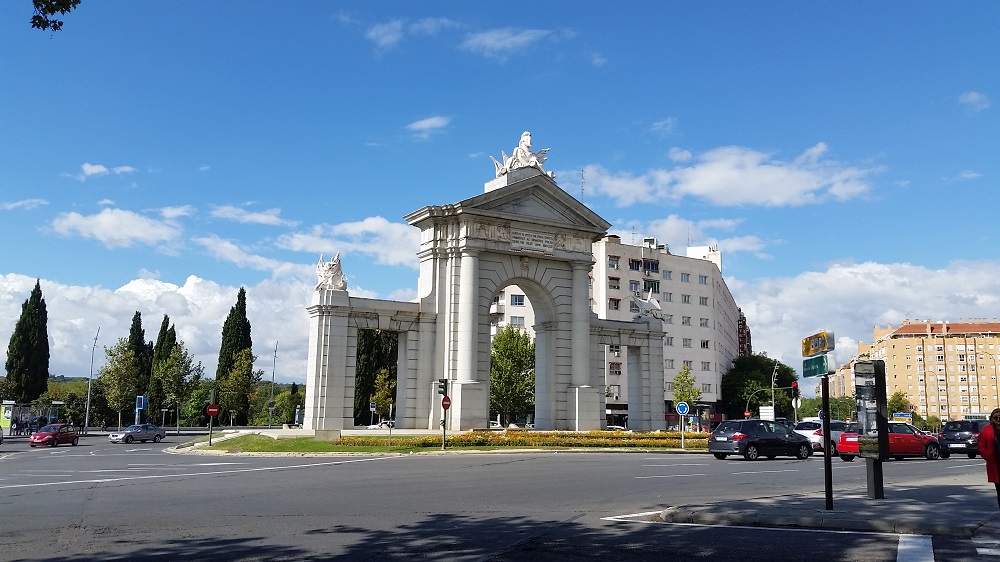
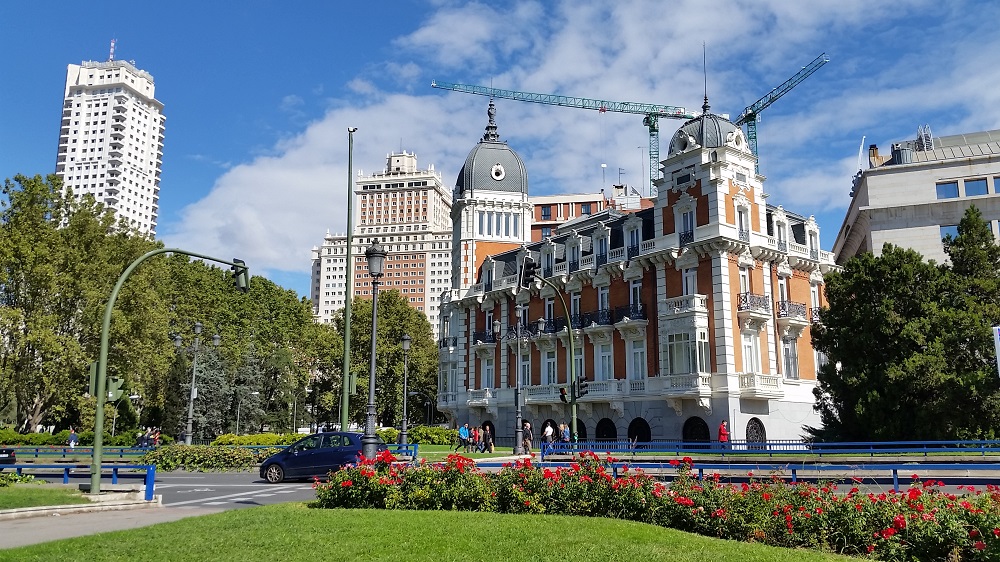
Plaza de España
The Plaza de España is a plaza in the Parque de María Luisa, in Seville, Spain, built in 1928 for the Ibero-American Exposition of 1929.
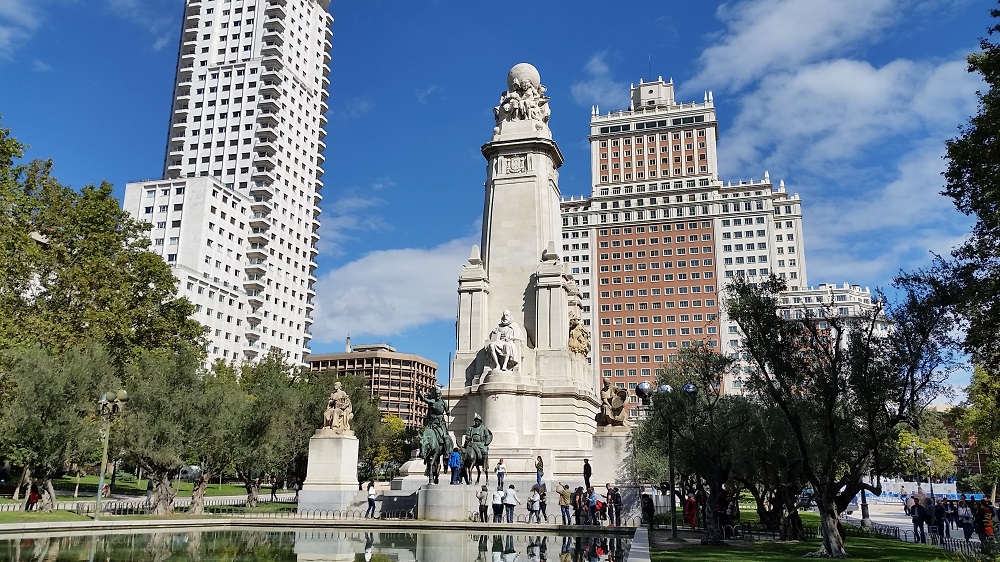
A fantastic example of the dedication to greenery in some parts of the centre.
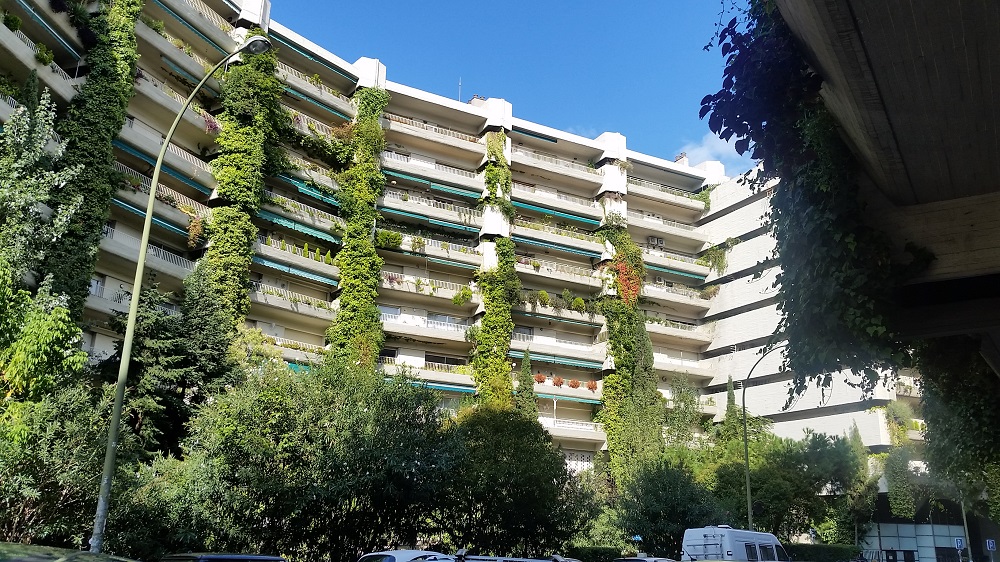
Plaza Murillo
Designed in 1558 by Juan Gutiérrez Paniagua, Plaza Murillo was named in honor of Bolivian hero Pedro Murillo, a signatory of the founding document of independence who was captured and hung by Spanish troops in 1810.
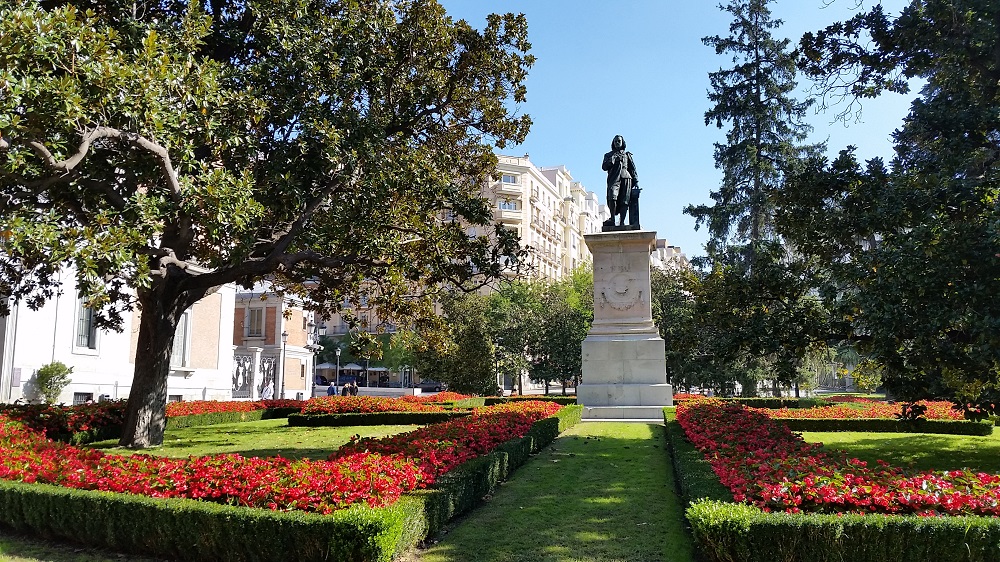
Puerta de Alcalá
In 1764 the original Puerta de Alcalá was demolished at the request of King Carlos III and work started on the grand new gate. The new Puerta de Alcalá was completed in 1769 and its official inauguration took place in 1778.
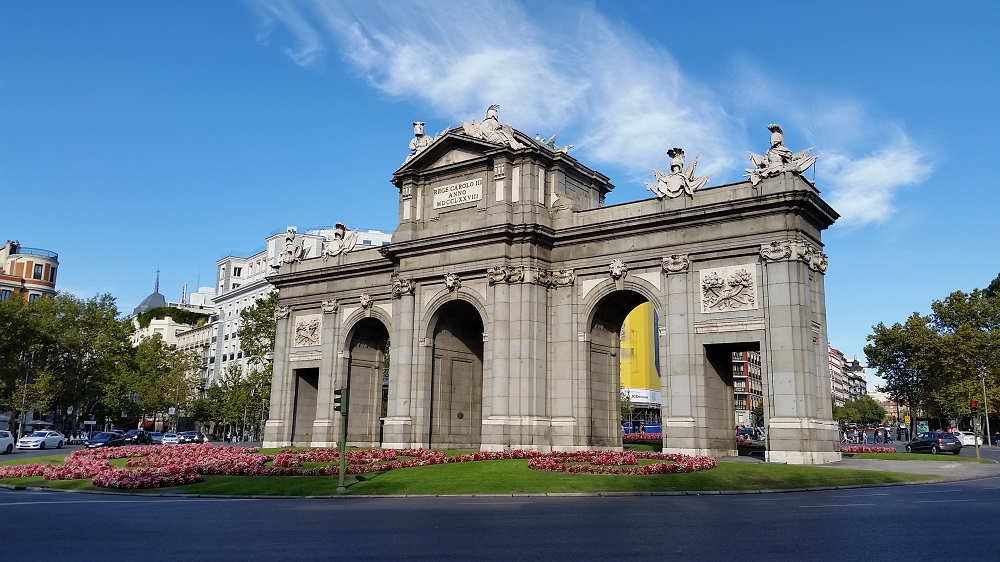
City Hall
From MadridTourist.info
The current City Hall of Madrid is the Communications Palace. It is a magnificent building situated along the south side of the Cibeles Square. In 2007 the building was transformed into the new home of Madrid’s city council.
Even though Madrid’s city hall looks like a high-gothic cathedral, it was originally built in the early 20th century as the main office of the Spanish postal service, hence its name Communications Palace. It continued to serve that purpose for about a century until November 2007 when it took over the function of city hall from the much less impressive “Casa de la Villa” at the Plaza de la Villa Square.
Its architecture is a combination of the gothic style with neoclassical elements. The building’s facade is elaborately decorated with cartouches and pilasters. Long pinnacles adorn the top of the towers, the tallest of which reaches a height of about 40 metres.
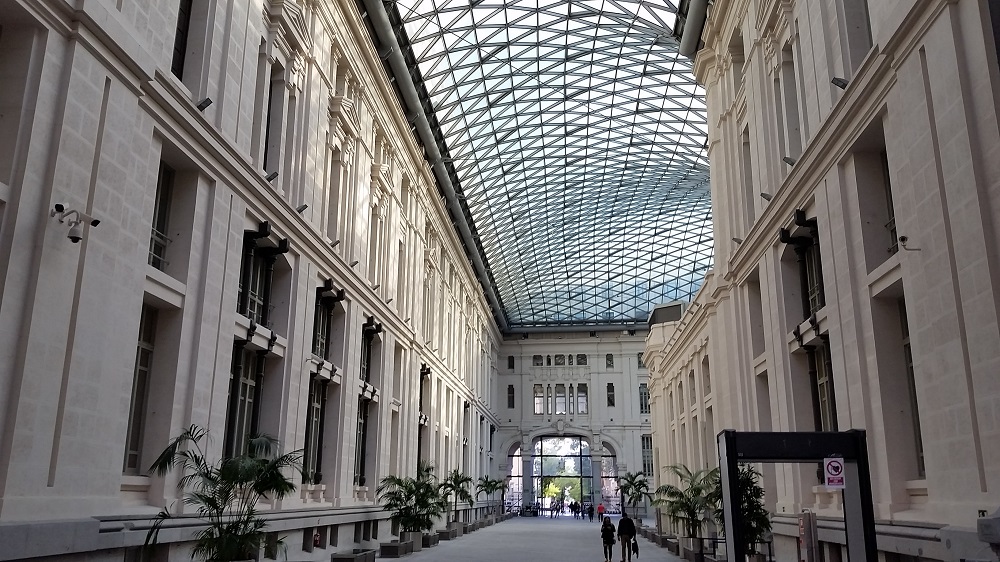
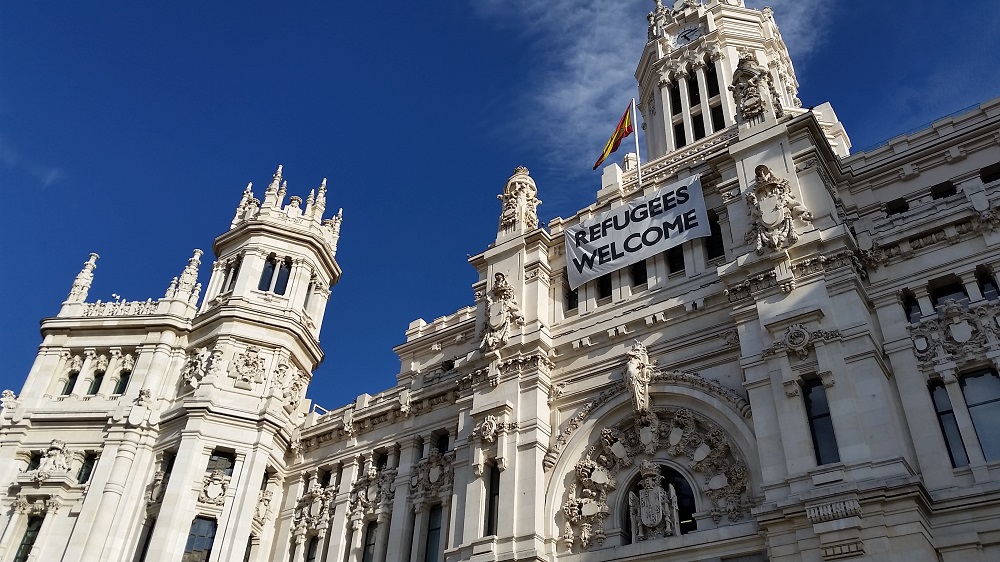
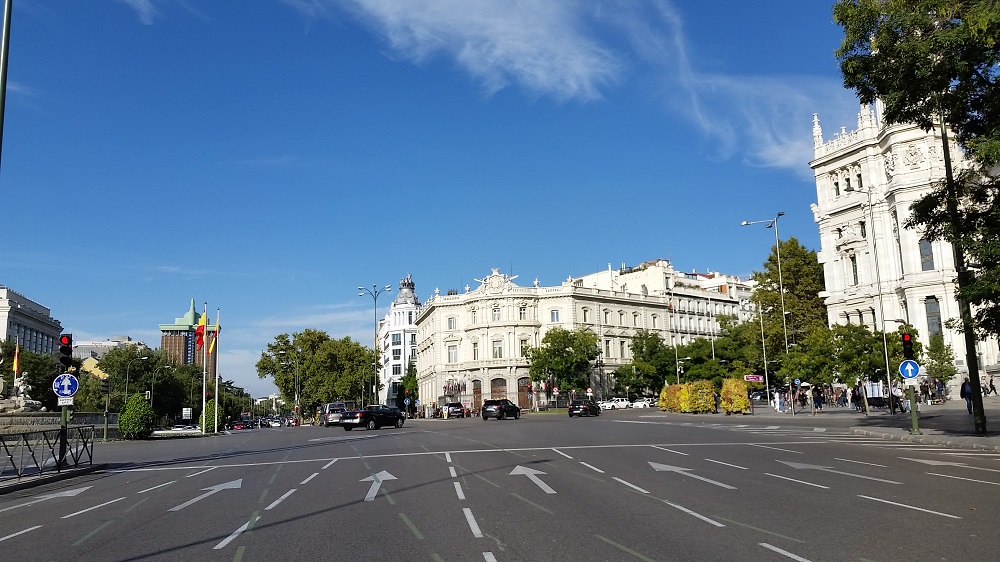
Instituto Cervantes
The Cervantes Institute is a worldwide non-profit organization created by the Spanish government in 1991. It is named after Miguel de Cervantes, the author of Don Quixote and perhaps the most important figure in the history of Spanish literature.
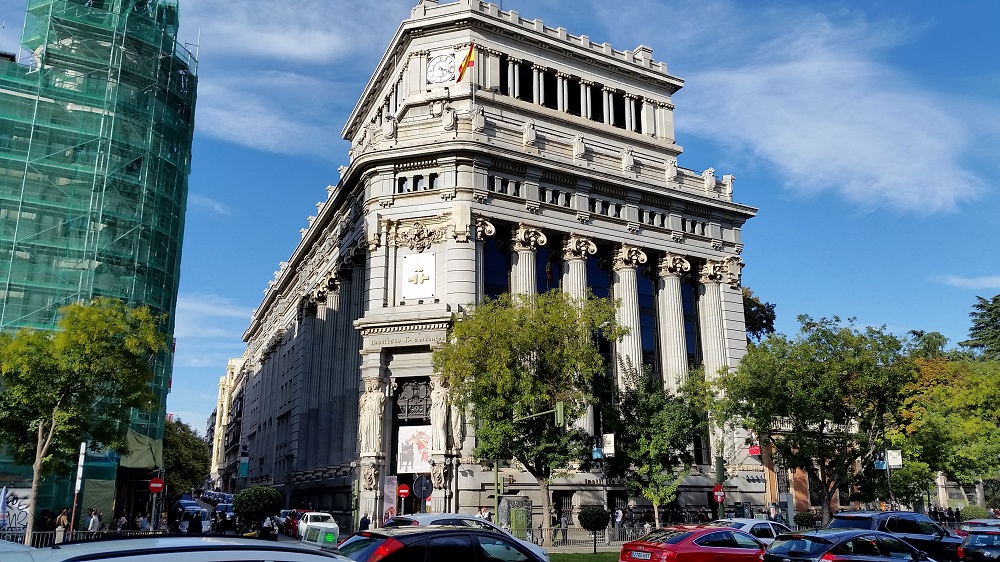
View to Metropolis
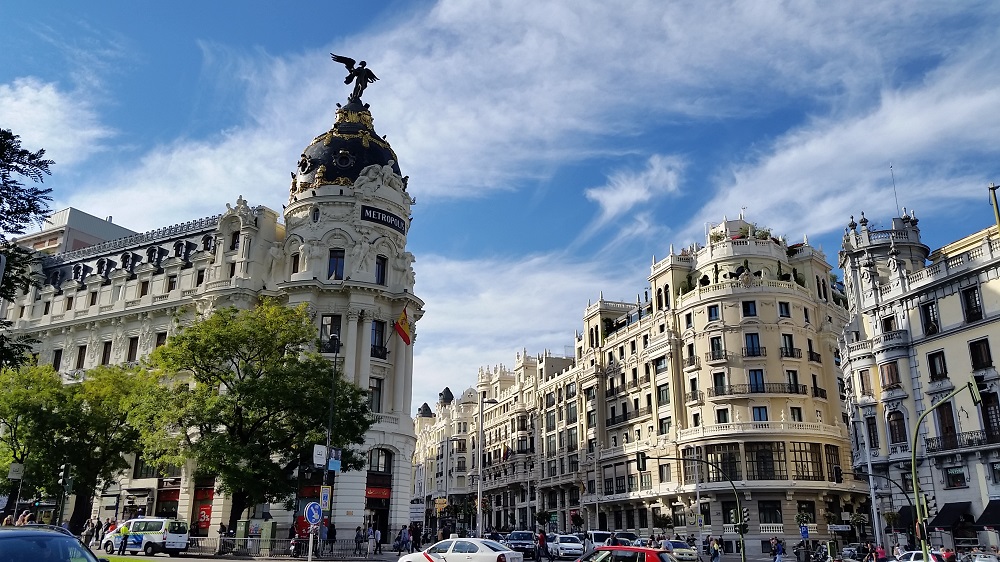
Another narrow street.
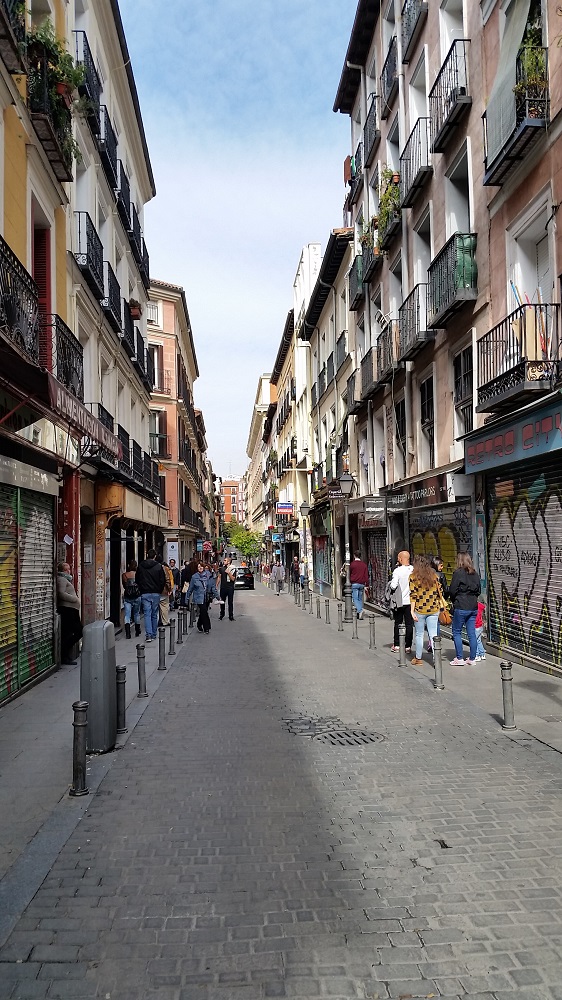
Viaducto de Segovia
The Segovia Viaduct is a viaduct in the La Latina neighborhood in Madrid, Spain. Throughout the centuries the area has been a major crossroad. The bridge’s main function has been to facilitate access between the town and the Royal Palace of Madrid.
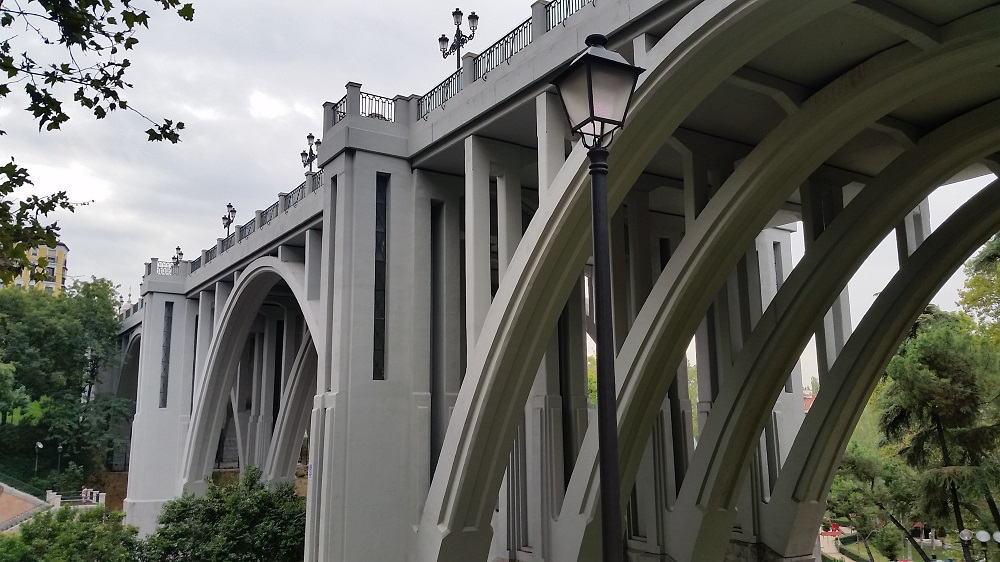
Royal Palace of Madrid
18th-century, ridge-top palace for state occasions, plus tours with rooms full of art and antiques.
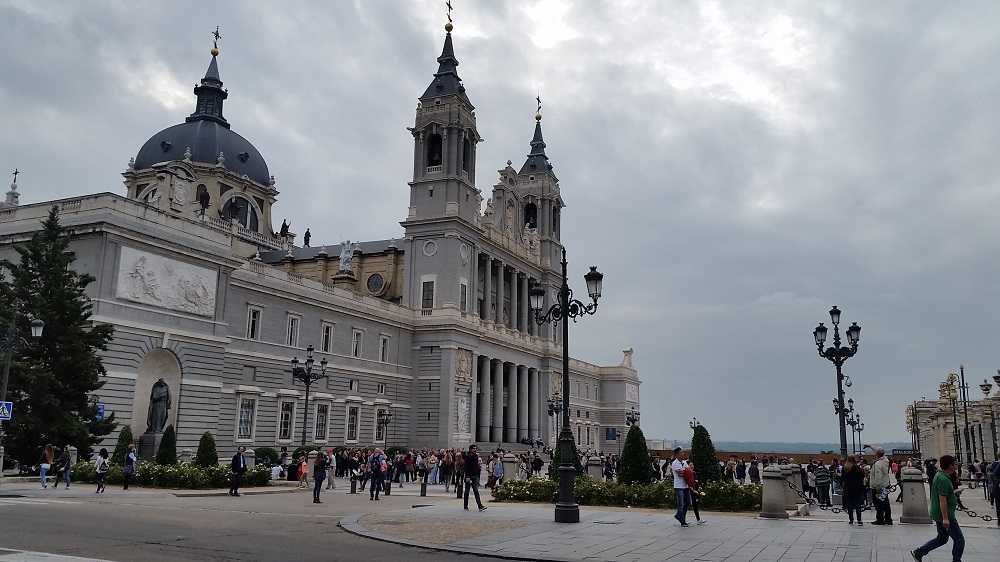
Pretty impressive.

